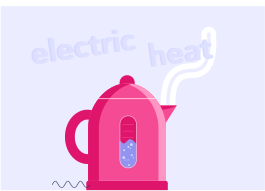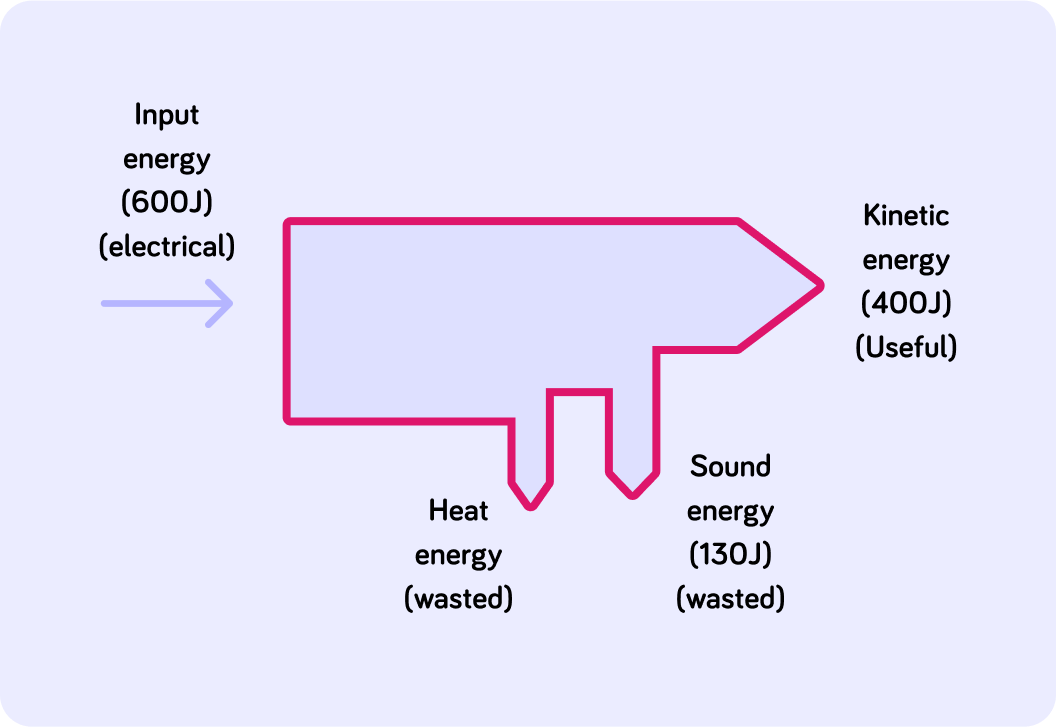YOU ARE LEARNING:
The Law of the Conservation of Energy

The Law of the Conservation of Energy
If energy cannot be created or destroyed, we can derive the law of Conservation of Energy to show no net change to the total energy in a system.
A lightbulb uses 100J of electrical energy. If 60J is transferred to light energy, how much of the electrical energy do you think is transferred to heat energy?

A loudspeaker transfers 300J of electrical energy into 290J of sound energy. How much energy do you think is 'wasted' in the form of heat energy?

A washing machine transfers 2000J of energy to heat, 1800J to kinetic energy and 100J to sound. Neglecting internal losses, can you guess what the input energy of the device might be?

Which statement do you think might be correct?

When considering energy transfers in a closed system the total energy in that system is always equal to the input energy. Can you guess what this principle might be called?

Which statement do you think best describes the 'Conservation of Energy' principle?

Which of the following diagrams might be used to illustrate the conservation of energy?

Here is an example of a basic energy transfer diagram.
This type of energy transfer diagram is called a Sankey diagram.

Have a guess what type of energy accounts for the biggest number of Joules?


In Sankey energy transfer diagrams, the thickness of the arrows is proportional to the amount of energy in Joules. Can you think how this might illustrate the conversation of energy principle?

For what reason would a perpetual motion machine not be able to sustain itself?

The image shows an example of a detailed energy transfer diagram.
This is a more detailed version of a Sankey diagram.

From the diagram, can you work out how many Joules are 'wasted' in heat energy?


To recap:
The Conservation of Energy is an important principle in physics. Everything must obey it!
Energy can neither be created nor destroyed.
In a closed system, energy in = energy out.
We can draw energy transfers and conservation in the form of Sankey diagrams. This allows us to see the amount of 'useful' and wasted' energy
